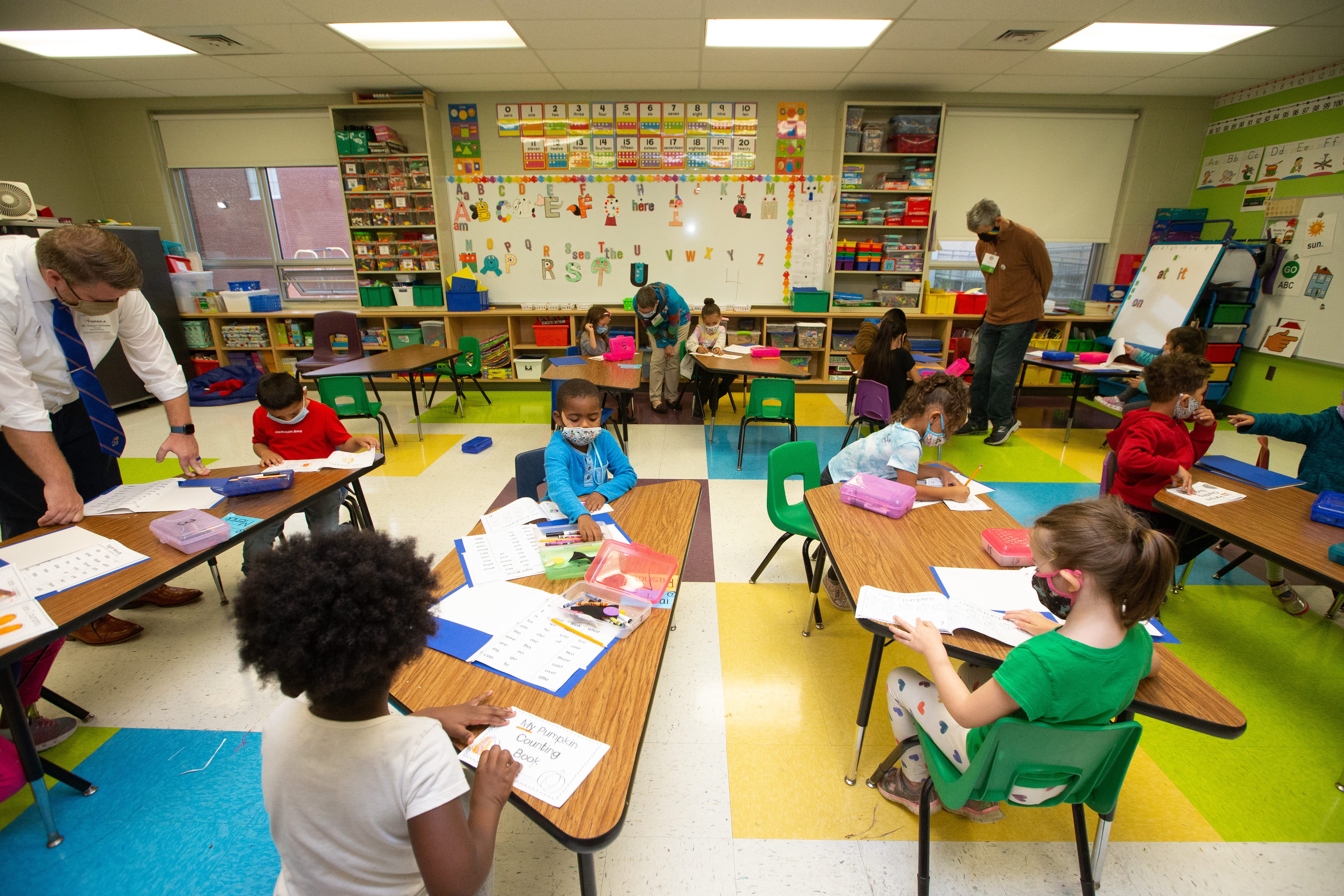The Best Primary Science Tuition Singapore for Effective Learning Methods
The Best Primary Science Tuition Singapore for Effective Learning Methods
Blog Article
A Comprehensive Guide to the Different Discovering Methods in Key Scientific Research Guideline
The exploration of varied discovering approaches in key scientific research guideline offers an opportunity for instructors to boost trainee involvement and comprehension dramatically. By analyzing hands-on learning methods, inquiry-based methods, and joint methods, we can identify effective techniques that deal with various discovering designs. In addition, the combination of innovation and separated guideline plays an essential function in cultivating an inclusive atmosphere. Nevertheless, the question remains: exactly how can these methods be successfully applied in the classroom to maximize their influence? The response depends on a more detailed examination of each technique and its ramifications for training science.

Hands-On Knowing Methods
Hands-on understanding strategies play a critical role in key scientific research guideline, engaging students in energetic exploration and trial and error. These approaches permit students to engage directly with products and sensations, fostering a deeper understanding of scientific concepts. By utilizing manipulatives, models, and real-life experiments, instructors produce an environment where trainees can observe, assume, and evaluate their ideas.
Such strategies not only improve understanding but likewise grow critical reasoning and analytic skills. When trainees join tasks like building basic machines, growing seeds, or conducting chain reactions, they are urged to ask questions and look for answers via their very own observations. This experiential method aids to debunk intricate clinical principles, making them more easily accessible and relatable.
Moreover, hands-on discovering promotes cooperation amongst peers, as pupils often work in teams to conduct experiments or share searchings for. This synergy not just enhances their learning experience yet additionally creates important social abilities. Eventually, integrating hands-on techniques in primary science direction promotes a long-lasting love of learning and curiosity regarding the environment, laying a strong foundation for future academic searches in scientific research and past.
Inquiry-Based Discovering
Inquiry-based learning is a training strategy that motivates pupils to ask questions, check out sensations, and build their very own understanding of scientific concepts. This method moves the focus from typical teacher-led instruction to a much more student-centered experience, where learners take the campaign in their instructional trip. By cultivating inquisitiveness, inquiry-based knowing promotes much deeper involvement with the material, permitting trainees to discover subjects in a significant context.
In method, this strategy commonly entails hands-on experiments, monitorings, and important reasoning activities that align closely with the clinical technique. Trainees are encouraged to create hypotheses, layout examinations, and evaluate data, which grows important abilities such as problem-solving and logical thinking. The duty of the educator in this structure is to facilitate expedition, leading pupils through the query process while motivating independent idea and collaboration.
In addition, inquiry-based discovering supports a feeling of possession over the learning procedure, encouraging trainees to go after expertise actively. This technique not just improves understanding of scientific concepts but likewise promotes a lifelong love for discovering, outfitting students with the abilities required to navigate a progressively complicated world.
Collaborative Discovering Approaches
Collaborative understanding techniques encourage pupils to involve in meaningful interactions with peers, promoting a common obligation for their instructional outcomes. In main science instruction, these strategies urge learners to collaborate to explore clinical ideas, address troubles, and perform experiments (primary science tuition Singapore). By joining group tasks, students can take advantage of diverse viewpoints, permitting richer understanding and retention of clinical understanding
One key element of collective understanding is the emphasis on interaction abilities. Trainees have to express their ideas, pay attention proactively to others, and discuss ideas, all of which are important competencies in both scholastic and real-world contexts. This social communication not just enhances their understanding of scientific principles yet also promotes team effort and dispute resolution abilities.
When trainees see the worth of their payments within a group, they are a lot more most likely to take ownership of their learning journey. In general, integrating collaborative learning approaches in main scientific research guideline grows a vibrant knowing atmosphere that prepares students for future academic and social obstacles.
Innovation Combination in Scientific Research
The assimilation of modern technology in primary science direction enhances finding out experiences by supplying ingenious devices and resources that sustain different training approaches, consisting of collaborative learning - primary science tuition Singapore. Using digital systems, her latest blog simulations, and interactive applications permits pupils to involve deeply with scientific concepts, facilitating an extra hands-on approach to learning
Digital research laboratories, for example, allow learners to perform experiments safely and efficiently, promoting inquiry-based understanding. These tools can mimic real-world scientific situations, allowing pupils to imagine complicated procedures that would certainly be challenging to duplicate in a typical classroom setting. Moreover, modern technology fosters interaction and partnership amongst pupils, as they can share searchings for and work with each other on jobs via on the internet systems.
Furthermore, multimedia discussions and academic videos can enrich lessons by dealing Read Full Report with varied knowing designs, making abstract principles a lot more easily accessible. Data analysis tools likewise equip students to accumulate and interpret clinical data, strengthening essential assuming skills. On the whole, the strategic consolidation of technology in primary scientific research direction not only improves engagement yet likewise prepares trainees for a highly innovative culture, equipping them with important skills for future scientific ventures.
Distinguished Instruction Techniques
Distinguished direction strategies are vital for resolving the varied requirements of learners in main science education and learning. These strategies enable instructors to tailor their training methods to fit differing capabilities, rate of interests, and finding out styles within the classroom. By utilizing separated direction, educators can produce an inclusive atmosphere that cultivates engagement and enhances understanding of clinical concepts.
One efficient method is to use adaptable grouping, which permits trainees to collaborate with peers at similar ability levels or with differing viewpoints. This technique encourages peer learning and promotes critical reasoning. Additionally, supplying selections in assignments can encourage pupils, enabling them to pick jobs that reverberate with their interests while still meeting curricular goals.
Additionally, incorporating tiered jobs is one more useful method. By designing tasks with varying degrees of intricacy, teachers can make certain that all pupils are appropriately tested, despite their effectiveness. Utilizing formative analyses to evaluate understanding more allows educators to adjust their training approaches dynamically, ensuring that each learner receives the assistance they require.
Ultimately, applying differentiated direction approaches in key scientific research education and learning not only boosts trainee learning outcomes yet additionally cultivates an interest for science, preparing pupils for future scholastic searches.

Conclusion
In summary, efficient key scientific research direction necessitates a diverse additional resources approach that incorporates hands-on discovering, inquiry-based methods, and joint techniques. The combination of innovation and distinguished guideline additionally accommodates varied discovering designs, cultivating an environment conducive to exploration and critical reasoning. By executing these strategies, instructors can boost trainee interaction and comprehension, ultimately nurturing a lifelong enthusiasm for scientific research and questions. Such detailed techniques are vital for creating notified and curious future scientists.
The expedition of diverse learning methods in main scientific research instruction provides a possibility for instructors to improve trainee interaction and comprehension dramatically.Hands-on understanding strategies play a crucial duty in main science direction, engaging pupils in active expedition and testing.Inquiry-based understanding is a training technique that motivates pupils to ask questions, explore phenomena, and build their own understanding of clinical ideas.Collective discovering approaches encourage pupils to involve in meaningful interactions with peers, cultivating a common responsibility for their instructional results. On the whole, integrating collaborative knowing approaches in primary scientific research instruction cultivates a dynamic knowing setting that prepares trainees for future scholastic and social challenges.
Report this page